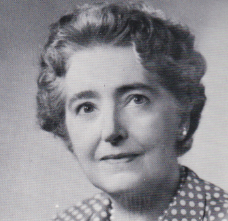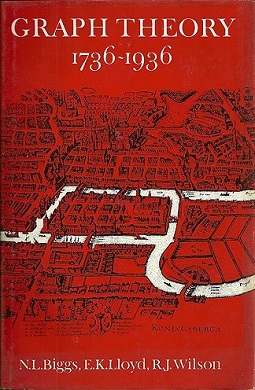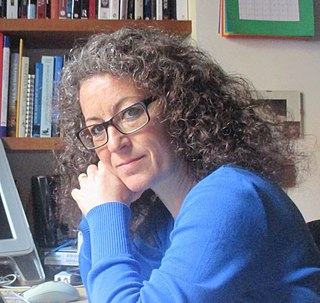Related Research Articles

The term "computer", in use from the early 17th century, meant "one who computes": a person performing mathematical calculations, before electronic computers became commercially available. Alan Turing described the "human computer" as someone who is "supposed to be following fixed rules; he has no authority to deviate from them in any detail." Teams of people, often women from the late nineteenth century onwards, were used to undertake long and often tedious calculations; the work was divided so that this could be done in parallel. The same calculations were frequently performed independently by separate teams to check the correctness of the results.
Eleanor Robson, is a British Assyriologist and academic. She is Professor of Ancient Middle Eastern History at University College London. She is a former chair of the British Institute for the Study of Iraq and a Quondam fellow of All Souls College, Oxford. She is a Fellow of the British Academy.
The Messenger of Mathematics is a defunct British mathematics journal. The founding editor-in-chief was William Allen Whitworth with Charles Taylor and volumes 1–58 were published between 1872 and 1929. James Whitbread Lee Glaisher was the editor-in-chief after Whitworth. In the nineteenth century, foreign contributions represented 4.7% of all pages of mathematics in the journal.
The Princeton Companion to Mathematics is a book providing an extensive overview of mathematics that was published in 2008 by Princeton University Press. Edited by Timothy Gowers with associate editors June Barrow-Green and Imre Leader, it has been noted for the high caliber of its contributors. The book was the 2011 winner of the Euler Book Prize of the Mathematical Association of America, given annually to "an outstanding book about mathematics".
Martin Campbell-Kelly is an Emeritus Professor at the University of Warwick who has specialised in the history of computing.
Michael Ira Rosen is an American mathematician who works on algebraic number theory, arithmetic theory of function fields, and arithmetic algebraic geometry.

Sir Alfred William Watson KCB FIA was a British actuary and civil servant. In 1917 he became Britain's first government actuary and was very influential in setting up the funding by National Insurance for the newly introduced state pension.

Jacqueline Anne "Jackie" Stedall was a British mathematics historian. She wrote nine books, and appeared on radio on BBC Radio 4's In Our Time programme.

Mary Eleanor Hunt Spear was an American data visualization specialist, graphic analyst and author, who pioneered development of the bar chart and box plot.
Complexities: Women in Mathematics is an edited volume on women in mathematics that "contains the stories and insights of more than eighty female mathematicians". It was edited by Bettye Anne Case and Anne M. Leggett, based on a collection of material from the Newsletter of the Association for Women in Mathematics, and published by Princeton University Press in 2005 (ISBN 0-691-11462-5).
Peggy Aldrich Kidwell is an American historian of science, the curator of medicine and science at the National Museum of American History.
Die Rechenmaschinen, by Ernst Martin, and its English translation, The Calculating Machines : Their History and Development, are books on mechanical desktop calculators from prior to World War II.
Marcia Alper Ascher was an American mathematician, and a leader and pioneer in ethnomathematics. She was a professor emerita of mathematics at Ithaca College.
Pioneering Women in American Mathematics: The Pre-1940 PhD's is a book on women in mathematics. It was written by Judy Green and Jeanne LaDuke, based on a long study beginning in 1978, and was published in 2009 by the American Mathematical Society and London Mathematical Society as volume 34 in their joint History of Mathematics series. Unlike many previous works on the topic, it aims at encyclopedic coverage of women in mathematics in the pre-World War II United States, rather than focusing only on the biographies of individual women or on collecting stories of only the most famous women in mathematics. The Basic Library List Committee of the Mathematical Association of America has strongly recommended its inclusion in undergraduate mathematics libraries.

Graph Theory, 1736–1936 is a book in the history of mathematics on graph theory. It focuses on the foundational documents of the field, beginning with the 1736 paper of Leonhard Euler on the Seven Bridges of Königsberg and ending with the first textbook on the subject, published in 1936 by Dénes Kőnig. Graph Theory, 1736–1936 was edited by Norman L. Biggs, E. Keith Lloyd, and Robin J. Wilson, and published in 1976 by the Clarendon Press. The Oxford University Press published a paperback second edition in 1986, with a corrected reprint in 1998.
Mathematics in India: 500 BCE–1800 CE is a monograph about the history of Indian mathematics. It was written by American historian of mathematics Kim Plofker, and published in 2009 by the Princeton University Press. The Basic Library List Committee of the Mathematical Association of America has classified the book as essential for undergraduate mathematics libraries, their highest rating.

The History of Mathematics: A Very Short Introduction is a book on the history of mathematics. Rather than giving a systematic overview of the historical development of mathematics, it provides an introduction to how the discipline of the history of mathematics is studied and researched, through a sequence of case studies in historical topics. It was written by British historian of mathematics Jackie Stedall (1950–2014), and published in 2012 as part of the Oxford University Press Very Short Introductions series of books. It has been listed as essential for mathematics libraries, and won the Neumann Prize for books on the history of mathematics.
A History of Mathematical Notations is a book on the history of mathematics and of mathematical notation. It was written by Swiss-American historian of mathematics Florian Cajori (1859–1930), and originally published as a two-volume set by the Open Court Publishing Company in 1928 and 1929, with the subtitles Volume I: Notations in Elementary Mathematics (1928) and Volume II: Notations Mainly in Higher Mathematics (1929). Although Open Court republished it in a second edition in 1974, it was unchanged from the first edition. In 1993, it was published as an 820-page single volume edition by Dover Publications, with its original pagination unchanged.

Corinna Rossi is an Italian Egyptologist known for her works on Ancient Egyptian mathematics and Ancient Egyptian architecture, on the archaeology of the Kharga Oasis, and on related topics in the history of Egypt and the Levant.
Mary G. Croarken is a British independent scholar and author in the history of mathematics and the history of computing.
References
- 1 2 3 Kidwell, Peggy Aldrich (July 2004), "Review of The History of Mathematical Tables", Technology and Culture , 45 (3): 662–664, doi:10.1353/tech.2004.0136, JSTOR 40060668
- 1 2 3 4 Zabell, S. L. (June 2005), "Review of The History of Mathematical Tables", Isis , 96 (2): 258, doi:10.1086/491481, JSTOR 10.1086/491481
- ↑ Gray, Jeremy (September 2004), "Table mountain (review of The History of Mathematical Tables)", Notes and Records of the Royal Society of London, 58 (3): 311–312, JSTOR 4142071
- ↑ Campbell, Paul J. (April 2004), "Review of The History of Mathematical Tables", Mathematics Magazine , 77 (2): 163, doi:10.1080/0025570X.2004.11953245, JSTOR 3219109
- ↑ Gouvêa, Fernando Q. (May 2004), "Review of The History of Mathematical Tables", MAA Reviews, Mathematical Association of America